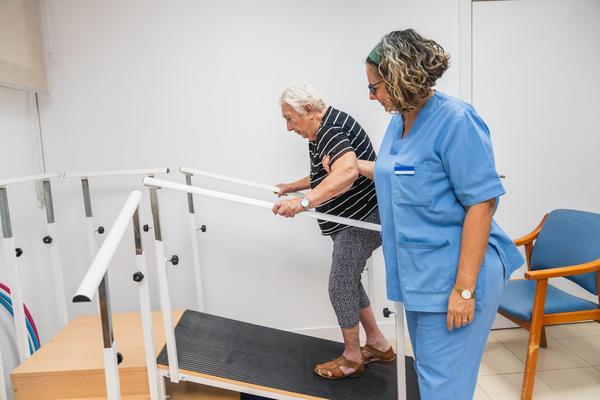When a loved one is hospitalized and begins to recover, doctors and discharge planners will often recommend transfer to another facility for ongoing care. But depending on whether you’re in Virginia, Maryland, or the District of Columbia, the terminology used to describe this next level of care may sound very different — even when the care itself is
essentially the same.
Understanding these differences in language is not just helpful — it can have practical and legal implications for families navigating Medicare coverage, Medicaid eligibility, and long-term care decisions.
The Same Level of Care, Different Words
After hospitalization, patients who are stable but still require skilled nursing care and/or therapy may be transferred
to a Skilled Nursing Facility (SNF). At this level, the facility provides services such as:
- Daily skilled nursing oversight
- Physical, occupational, or speech therapy
- Pain management and medication administration
- Wound care or IV treatment
This type of care is often referred to as post-acute care and is typically covered by Medicare — at least for a limited time —
if the patient qualifies.
But the language used to describe this care level varies signifciantly by jurisdiction:
Virginia: “Rehab” Is the Default Term
In Virginia, hospitals and discharge planners almost universally refer to SNF-level care as “rehab” — short for rehabilitation. Patients and families are commonly told, “you’ll be going to rehab for a few weeks.”
This terminology has become a kind of institutional shorthand, used even when the patient’s needs are more medical than therapeutic. The word “rehab” is seen as more hopeful and recovery-oriented, and many Virginia skilled nursing facilities market themselves as “health and rehab centers” rather than nursing homes.
Key point: In Virginia, “rehab” usually refers to subacute SNF care, not
inpatient rehabilitation hospitals, unless otherwise specified. Occasionally, individuals in Virginia are sent from a hospital to an LTAC (long-term acute care hospital) -- when the patient no longer needs hospital care in Virginia but need a level of medical care higher than a typical nursing home provides. There a very few LTACs in Virginia, but those few are either stand-alone facilities and some are housed inside the walls of a hospital.
Maryland: “Subacute Care” Is the
Preferred Language Rather than Rehab
In contrast, Maryland hospitals tend to use the term “subacute care” when referring to the same SNF-level placement that Virginia hospitals call "rehab." Discharge planners often explain that the patient is being referred to a “subacute facility” or a “subacute bed.”
This reflects a more clinical and precise approach. Maryland hospital systems —
particularly larger ones like Johns Hopkins and the University of Maryland Medical System — are careful to differentiate between:
Subacute care (SNF-level, less intensive, provided in nursing homes), and
Acute inpatient rehab (more intensive, typically requiring 3 hours of therapy per day, provided in rehabilitation hospitals).
Key
point: In Maryland, the term “rehab” is usually reserved for high-intensity inpatient rehabilitation, whereas “subacute” refers to Medicare-covered skilled nursing care. However, many if not most patients who are transferred to a nursing home for subacute care also receive rehabilitation services.
Washington, DC: A Mixed Terminology Environment
In the District of Columbia, the
language varies depending on the hospital system and the discharge team. Some facilities mirror Maryland’s preference for “subacute care,” while others may use the term “rehab” more liberally.
In some DC hospitals, you may hear both terms used interchangeably, which can be confusing for families trying to understand what level of care is being recommended.
Does Terminology Matter?
Yes and no. The terminology used doesn't matter as far as the care goes, as the care provided is the same. Regardless of what it’s called, SNF-level care that occurs directly after a qualifying hospital stay is generally covered by Medicare Part A for up to 20 days, and then partially covered by Medicare Part A for days 21-100 (so long as the care is medically necessary).
However,
the terminology used can influence:
Patient expectations: “Rehab” sounds short-term and recovery-focused, while “subacute” may imply a more medical intensive process. Patients in Virginia sent to "rehab" may not realize that they are also going to get skilled nursing care as needed. And Maryland patients send to “subacute care” may not realize that subacute care also includes rehab as needed.
Discharge planning decisions: Misunderstanding the level of care needed can lead to premature discharge, placement in the wrong type of facility (for example, an LTAC that doesn't have any long-term care beds even when it's known that the patient is going to need long-term care).
Legal and financial preparation: If a short-term “rehab” or "subacute" stay evolves into long-term custodial care, families need to
understand when Medicare stops paying and Medicaid planning becomes essential. This is where we, as an Elder Law Firm focused on Medicaid Planning, becomes critical.
Bottom Line
If your loved one is being transferred from the hospital to a facility that’s being described as either “rehab” or “subacute care,” ask the discharge team:
What level of
care is being recommended?
Is the care covered under Medicare Part A?
Is this a skilled nursing facility, an inpatient rehabilitation hospital, an LTAC, or something else?
Will this be short-term or potentially long-term?
And most importantly: Don’t let the
terminology fool you. Whether it’s called “rehab” or “subacute care,” the key is understanding what care is being delivered, how it’s paid for, and what legal planning may be needed next.
Our Services
Our elder care services include comprehensive strategies that work for you at each stage of life. A large part or practice involves helping people such as you protect your assets and prevent
you from going broke in the event you need long-term care and ensuring the highest quality care. Our team is here to assist you every step of the way.
Learn more about our services and how we can help you plan for the future.
Stay healthy, stay informed, and take the steps necessary
to build protect your assets from the devastating costs of nursing home long-term care.


